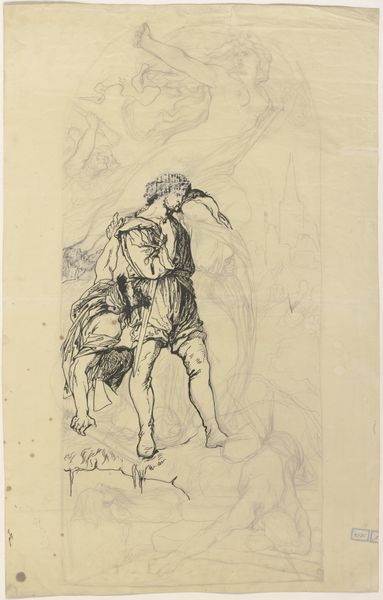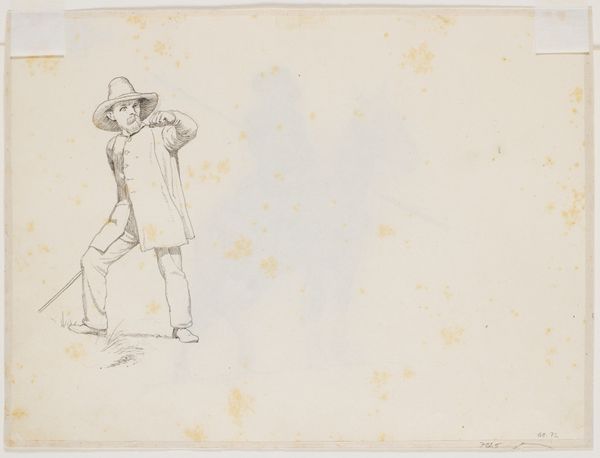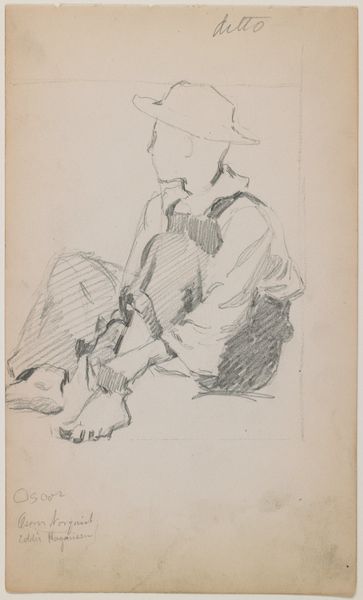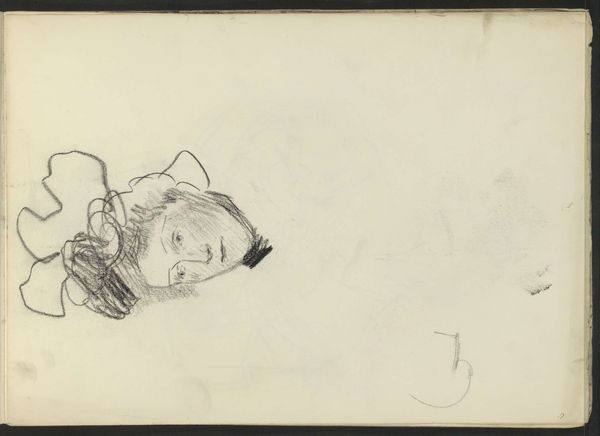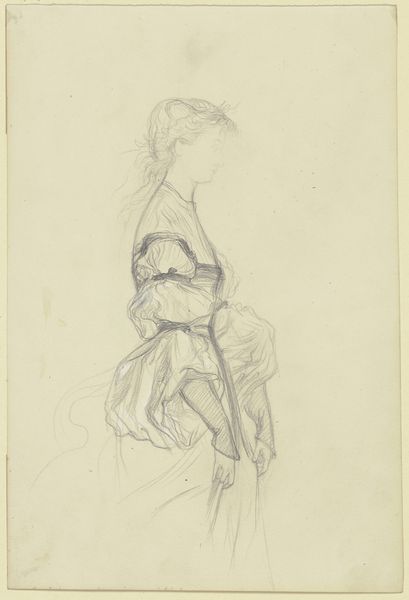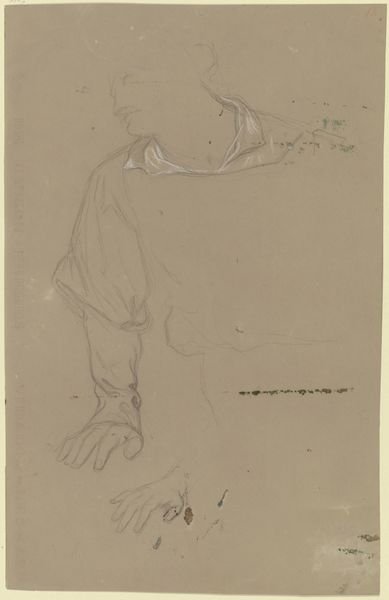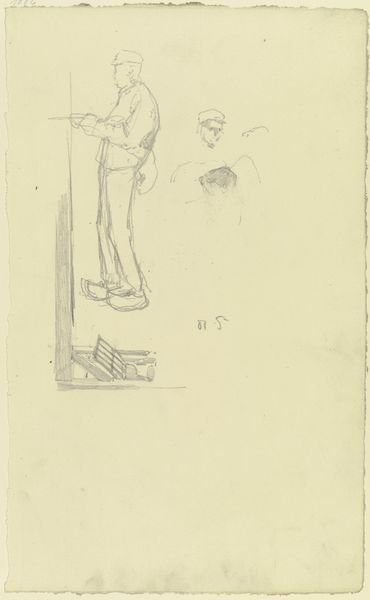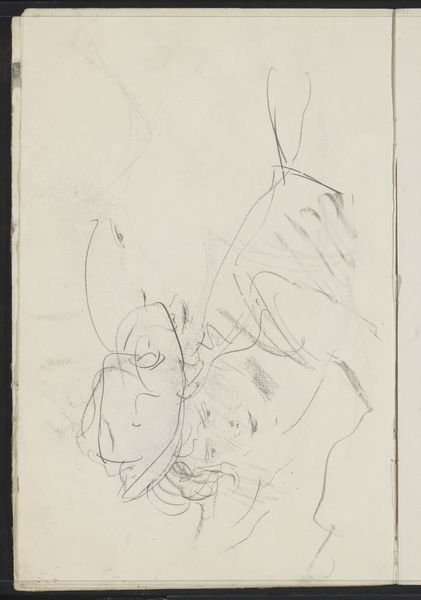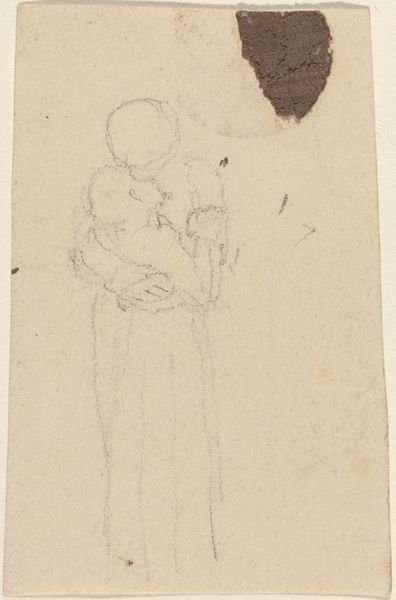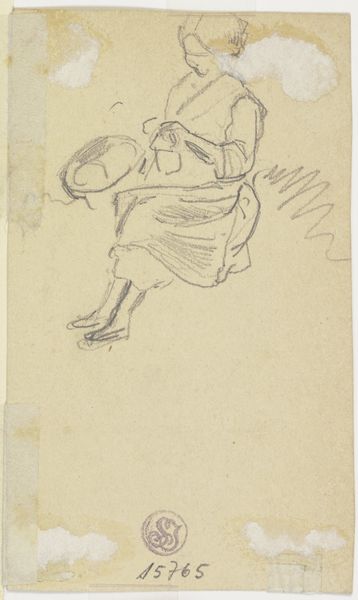
drawing, paper, pencil, chalk
#
portrait
#
drawing
#
pencil sketch
#
landscape
#
figuration
#
paper
#
pencil
#
chalk
Copyright: Public Domain
Curator: Here we have Otto Scholderer's "Knabe mit geschultertem Korb (Knabe mit Ziege)," created in 1862. Editor: It's a humble graphite sketch on paper; my first impression is one of quiet melancholy. He's a working boy, burdened by his task. Curator: Absolutely, and situating this within its historical context is crucial. Scholderer made this in a period marked by significant rural transformation. Peasants, often children, were crucial laborers, yet often invisible within mainstream society. Editor: Right, this piece immediately suggests the exploitation inherent to a particular socio-economic system. Look at how Scholderer renders the goat: barely articulated. Is this about representing the underpaid and under-respected work? Curator: Precisely. It challenges the Romantic idealization of rural life common at the time, offering a stark view of childhood labor. Scholderer uses delicate strokes to show vulnerability, drawing out the systemic imbalances between labor, visibility, and class status. Editor: The material handling echoes this. It's not an idealized oil painting destined for a salon; it's a preliminary sketch, something rapidly produced. The lack of polish is striking—a possible signifier of hurried labor. Curator: Yes, this immediacy draws attention to the accessibility of the medium. Pencil and paper become tools to document social conditions that more glamorous media might overlook. The composition isn't classically staged, highlighting everyday realities and social truths. Editor: It begs the question: what labor was being commodified at the time the sketch was completed? The artwork offers us a glimpse into that commerce and social dynamic, suggesting how all forms of work, no matter how modest or overlooked, factor into capitalist and industrial systems. Curator: It's a subtle, powerful work that gives voice to those made invisible by prevailing norms and hierarchies. Editor: And reminds us to look closely at the art world's methods and materials for deeper social truths.
Comments
No comments
Be the first to comment and join the conversation on the ultimate creative platform.

